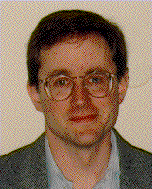
Jim Hefferon
Mathematics and Statistics
University of Vermont
This page will get you to some documents, including my
Linear Algebra text
Theory of Computation text.
It also has information about
how to
reach me.
What's Up?
I have three books that are Free.
Please note that the canonical web page for these
books is now
hefferon.net.
This site is mobile friendly and has a number of other advantages.
If you make links, please use that URL.
-
Linear Algebra.
is for the first course for US undergraduates.
It includes the PDF of the text, LaTeX source code,
in-class beamer slides, and lab manual using Sage.
-
Theory of Computation.
is for the theory course taken by undergraduate Computer Science
majors, and sometimes by Mathematics majors.
It includes the PDF of the text and LaTeX source code.
-
A Inquiry-based Introduction to Proofs.
is for the proofs course often given to US undergraduates.
It includes the PDF of the text, the LaTeX source, and some
in-class beamer slides.
This is for an Inquiry-based course, so the text for the entire semester
is just seven sheets of paper.
I'm also having a lot of fun with Logic, Scheme, and ham radio.
(I'm KE1AZ by the way. CW QSO?)
And, jogging.
The best place to get my email is
hefferon.net.
Additional documents
-
An undergraduate
Number Theory book.
-
This book is also available free for downloading.
It covers a first course, and is based on a writeup by W Edwin Clark,
of the University of South Florida.
It also comes with
LaTeX source.
-
A Calculus lab on the
Local Growth Rates of Polynomials,
and the LaTeX and Gnuplot source.
-
This lab
is intended to be used right away---in the first week---as
a way of developing derivatives that complements
the tangent line development.
My approach is that (i) labs in Calculus should focus on Calculus
as much as possible, not on the software,
and (ii) students will get more out of a lab if they
prepare for it ahead of time.
This lab has three parts---Before the Keyboard, At the Keyboard, and
After the Keyboard.
In the first part they do some by-hand problems, which get expanded
in the second part to problems best suited to machine calculation.
Then the third part is a quite short,
``where do we go from here''-type thing.
All three parts have a few exercises.
I intend to write some more in the same style when I get a chance.
(if someone sends me mail telling me how great this one is, that
would be an inducement!).
